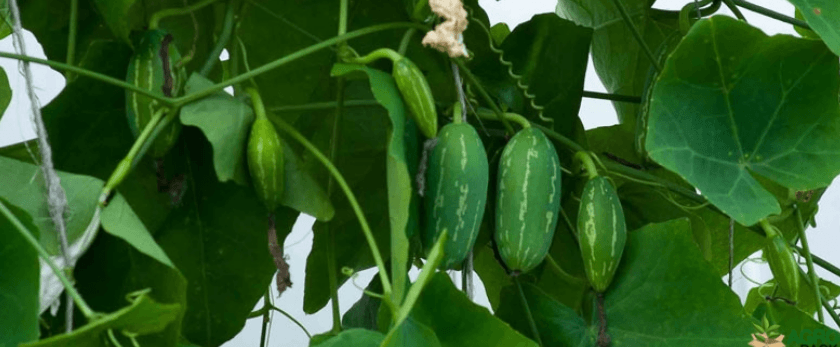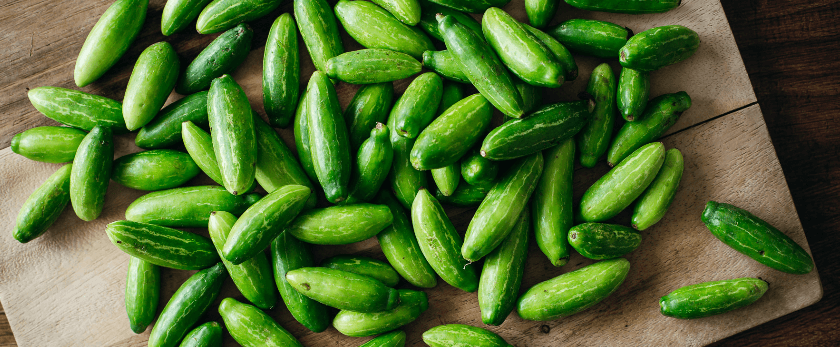Tindora, also known as ivy gourd or scarlet gourd, is a popular vegetable in many Asian and African countries. It is a fast-growing, climbing vine that produces small, elongated fruits that are commonly used in curries, stir-fries, and pickles. Not only is tindora delicious and versatile in the kitchen, but it is also relatively easy to grow in your own backyard. In this article, we will discuss how to care for tindora plants, the best time to grow them, and common problems that may arise.
How to Care for Tindora
Watering
Tindora plants require regular watering to thrive. Keep the soil consistently moist, but not waterlogged. Water deeply once or twice a week, depending on the weather and soil conditions. During hot and dry periods, you may need to water more frequently. Avoid getting water on the leaves as this can lead to fungal diseases.
Light
Tindora plants prefer full sun, but they can also tolerate partial shade. If you are growing them indoors, place them near a sunny window or provide them with artificial grow lights. If you are growing them outdoors, make sure they receive at least 6-8 hours of sunlight per day.
Soil
Tindora plants grow best in well-draining, fertile soil. They can tolerate a wide range of soil types, but they prefer slightly acidic soil with a pH of 6.0-6.5. If your soil is too alkaline, you can add some peat moss or compost to lower the pH. It is also a good idea to add some organic matter, such as compost or aged manure, to the soil before planting to provide essential nutrients.
Fertilizer
Tindora plants are heavy feeders and require regular fertilization to produce a bountiful harvest. You can use a balanced fertilizer, such as a 10-10-10, every 2-3 weeks during the growing season. Alternatively, you can use organic fertilizers, such as fish emulsion or compost tea, which will also improve the soil's overall health.
Pruning
Tindora plants are vigorous climbers and can quickly take over your garden if left unchecked. To keep them under control, prune them regularly. You can pinch off the growing tips to encourage bushier growth or trim back any long, unruly vines. Pruning also helps to improve air circulation and prevent diseases.

What is the Best Time to Grow Tindora?
Tindora plants are tropical and subtropical plants, so they thrive in warm weather. The best time to grow tindora is during the spring and summer months when the temperatures are consistently above 60°F (15°C). If you live in a colder climate, you can still grow tindora, but you will need to start them indoors and transplant them outside once the weather warms up.
Common Problems with Tindora
Despite being relatively easy to grow, tindora plants can still face some common problems. Here are a few issues you may encounter and how to address them:
Pests
Tindora plants are susceptible to a few pests, including aphids, spider mites, and whiteflies. These pests can be controlled by spraying the plants with a strong stream of water or using insecticidal soap. You can also introduce beneficial insects, such as ladybugs or lacewings, to help control the pest population.
Diseases
Tindora plants can also be affected by fungal diseases, such as powdery mildew and leaf spot. To prevent these diseases, avoid getting water on the leaves, provide adequate air circulation, and remove any infected leaves or plants immediately. You can also use organic fungicides as a preventative measure.
Nutrient Deficiencies
If your tindora plants are not producing as many fruits as expected or the leaves are turning yellow, it may be a sign of nutrient deficiencies. Make sure to fertilize regularly and check the soil pH to ensure it is within the optimal range for tindora plants. You can also add some organic matter, such as compost or aged manure, to provide essential nutrients.
Conclusion
Growing tindora is a rewarding experience that can provide you with a bountiful harvest of this delicious and versatile vegetable. By following the care tips outlined in this article, you can ensure that your tindora plants thrive and produce an abundance of fruits. Remember to water regularly, provide adequate sunlight, fertilize, and prune as needed. With a little bit of effort, you can enjoy fresh tindora from your own backyard. Happy gardening!










